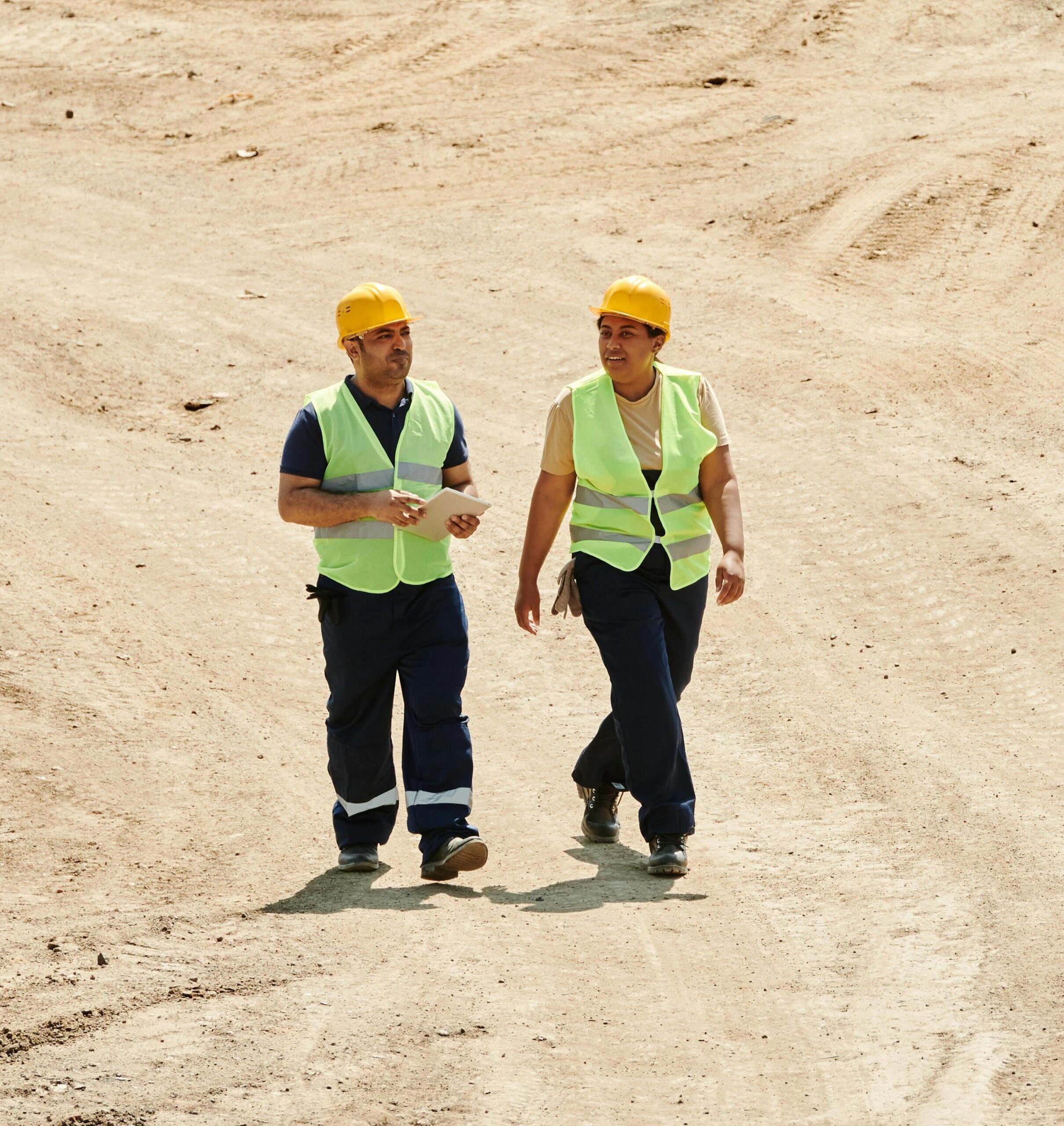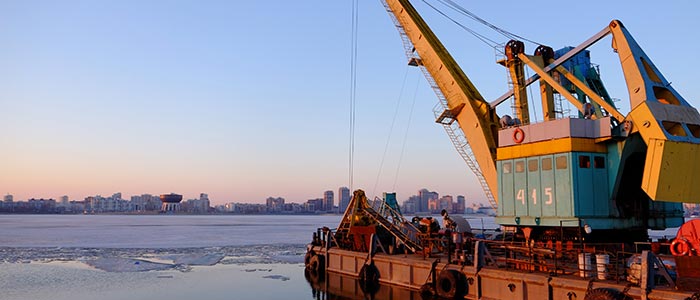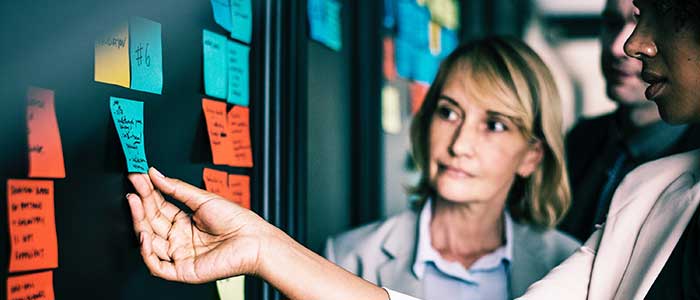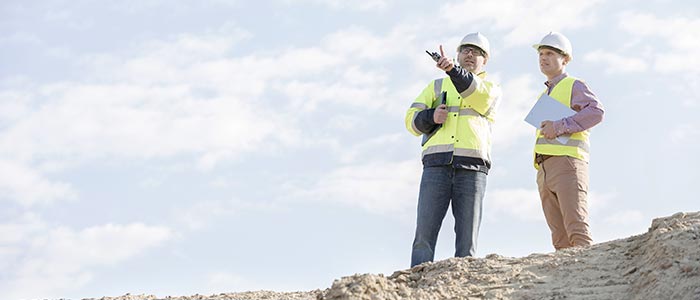Dashpivot article – How to write a Site Visit Report for construction
How to write a site visit report for construction
In this article, we'll focus on the basics of how to write a site visit report for construction, providing you with all of the context and resources you need to produce a very well presented and professional site visit report.

Why knowing how to write a construction site visit report is important
A construction site visit report is the document used to record the observations, issues, and hazards discovered on a construction project or site. Some stakeholders learned how to write a site visit report from their education or formal training, and others are just given it as a task and made to figure it out (hence why you are probably here).
To understand how to write a construction site visit report, it's best to understand the mechanics of them first, and you can also read an in-depth article about the right format for site visit reports here.
Like a regular site visit report, a construction site visit report details the project progress and any issues detected, however in the construction industry, it’s important to assess whether the project is in compliance with the design specifications laid out and safety regulations implemented.
In this industry, time and money directly impact project success. A construction site visit report helps in identifying problems at their early stages, preventing issues from escalating and costing much more for reworks or renovations. It’s the tool to track whether a project is aligned with the timeline, considering that most site activities and project deadlines have tight deadlines.
Delays and discrepancies may disrupt the project workflow thus costing more money. And if the workers or machineries need to stay on site longer than intended, labor, equipment, and operational expenses may increase. Proper management using construction site visit reports ensures projects are on track with the project timeline and that project activities are within the budget.
Because construction sites inherently pose a great degree of risk of harm, the construction industry is particularly strict with complying to regulations and safety standards. Construction companies regularly perform site inspections and collaborate with regulatory bodies in ensuring regulations and standards are met.
The main purpose of a site visit report is that it features well-documented evidence that regulatory bodies need to ensure that the project or site is following the approved specifications and plans, and safety practices.
As the communication tool between all parties such as the contractors, workers, personnel, stakeholders, and investors, a construction site visit report is an indispensable document to a successful construction project.
How Does Writing a Construction Site Visit Report Differ From Site Visit Reports In Other Industries?
A construction site visit report focuses more on the construction progress compared to other industries. Although the contents may include workflow, operational efficiency, and compliance related to personnel similar to other site visit reports in other industries, a construction site visit report mainly highlights the physical progress.
All site visit reports may adhere to design specifications if needed, but construction site visit reports involve more detailed contents to check whether the site activities and work progress are aligned with the building codes, engineering plans, blueprints, and architectural designs.
What do you need to cover in your site visit report?
A construction site visit report has unique sections that are used in construction sites that focus on the physical structure and progress of a project or site.
The work progress section details the completed tasks related to the physical construction progress. This involves the status of a construction project that is primarily based on the measurable extent of work that has already been completed. It may be consolidated along the site conditions section
For a construction site visit report, there could be a plans or specifications section that helps visitors evaluate whether the tasks, activities, and projects are compliant or not with the designs and plans.
The safety compliance section helps visitors assess the safety protocols and regulations, such as the OSHA standards, and includes an assessment section whether the workers are using PPEs.
There could be a materials or workmanship section that examines the quality of materials and workmanship of the workers or contractors.
Should there be any tests, inspections, or any other quality control activities, results should be included under the test and inspection results section.
It’s essential that construction projects are compliant and it should be documented under the compliance with building codes and regulations section. Should there be any violations, they should be flagged and immediate be addressed
To fully describe the tasks, activities, and project progress, visual evidence is necessary. There could be a photo and visual evidence section like in a site diary or daily progress report or they could be attached directly along the observations section. Even with hazards and issues found, it’s important to flag them, document, and provide suggested corrective actions to avoid them in the future.
These sections may or may not be applicable to all construction projects. A construction site visit report may be flexible that suits the construction company’s preferences, but the most important thing to take note is that all essential details should be documented and reported.
What should a completed report look like?
Now that you now how to write a site visit report, after you've written your construction site visit report, it should look along the lines of the example below.

Use this free Construction Site Visit Report framework yourself
Why is Time Sensitivity More Critical In Writing Construction Site Visit Reports?
If you weren't stressed enough having to find the answer to how to write a site visit report for your construction projects, you should also know that there is some urgency to getting them written and shared.
Construction site visit reports should be fulfilled with time sensitivity or delivered in a strict deadline as the construction industry is more fast-paced compared to other industries. In order to keep up with the strict deadlines and restricted budgets, construction site visit reports should be fulfilled as urgently as possible.
Construction projects have contractual deadlines and if there are delays in completing even a single phase, this could greatly impact the project timeline, causing delays, and in turn having penalties and additional costs. Construction site visit reports aid in identifying issues in their premature stages and addressing them as soon as they’re discovered.
The construction site visit reports also aid in avoiding project delays involving multiple contractors as well. It promotes a synced and monitored schedule among contractors. A construction project may involve more than one contractor and if one contractor’s timeline is delayed, this may also cause delays for other contractors.
How to spend less time 'writing' construction site visit reports?
Construction site visit reports should be aligned with the strict deadlines in the construction industry. To enhance the efficiency in filling out the reports, digitised forms should be implemented to speed up the data input and streamline the reporting process.
Digitised forms have standardised and uniformed formats that make it easier for visitors to input the necessary information, saving a lot of time and physical paper works that might be lost or forgotten along the way. Visitors can input data in real time using their mobile and tablets, reducing delays in data input. With Dashpivot, stakeholders like project managers, contractors, workers, and other personnel can have real-time access to the digital reports remotely from anywhere that makes it quick to make informed decisions regarding the project. You can edit permissions and have certain individuals access to specific folders or forms, ensuring high security in your company database.
Build your company’s own construction site visit report that works best for you and your team, or base off the format from our public template library. Use the drag and drop software to design the report that your team can understand. Add prefilled texts, tables, checklists, lists, and many more with Dashpivot. You can even attach photos that have markups, GPS, and many more in the observations section, which makes it easier for you and your team to determine the project progress, the issues and hazards found, and the extent of the damages. Visual evidence is key in a construction project that emphasises physical progress.
With a centralised system and a database, team members can collaborate with the reports remotely in real time. Digitised forms encourage faster coordination among team members, contractors, and other stakeholders.
Reduce paperwork and complicated folder systems by going digital. Your team won’t need to worry about manual data entry and all your construction site visit reports will be stored in your folders. Dashpivot offers a flexible folder system that you can cater to your company’s preference. You can even share these files directly to regulatory bodies for audits or compliance reports.
Create dashboards and analytics based on the information your team input across all the construction site visit reports at different days. This makes it easier for stakeholders to make informed decisions as they can see the patterns and recurring hazards and issues happening on site.
A digital system has a history of all the logs, changes, and updates, so that it’s easier to see who were the persons editing the documents. This promotes accountability within the team and makes it easier to track whoever is responsible in specific documents. Audit trails are also essential for future inspections and legal purposes.
Workflow documents make it easier to assign to different persons should approvals be needed. It’s easier to streamline communication and workflow documents with this feature. No need for the hassle of chasing someone for approvals, easily tag them and Dashpivot will let them know. This results in faster approvals and inspections because they don’t need to wait for the physical paperwork.

Site diary template
Complete and organise your daily diaries more efficiently.

Meeting Minutes template
Capture, record and organise those meeting minutes.

Delay analysis form
For when you uncover delays in your site reports, analyse the delays

